America is known for its cutthroat capitalism, and the sports card industry exemplifies the cutthroat world of hostile mergers, monopolies, and aggressive tactics we know and love from Hollywood movies. However, the stories behind these companies and their rivalries are sometimes more interesting than the cards.
In this article, we will try to briefly but accurately give the whole story behind our favorite cards. Of course, countless card companies have appeared and disappeared since the first was printed in the late 19th Century. But we will limit our overview to the modern card companies, starting with the historic rivalry between Bowman and Topps until today.
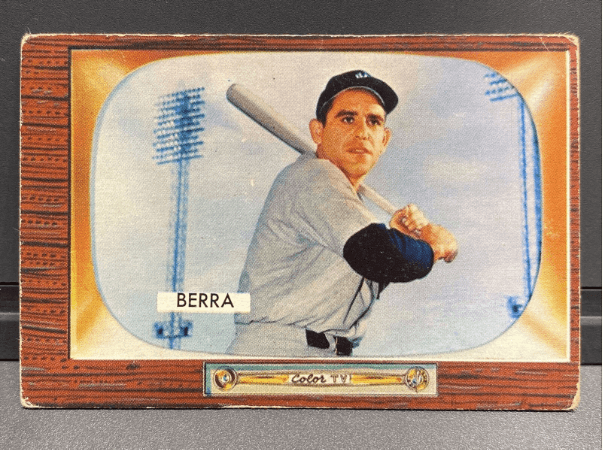
The History of Bowman Trading Cards
While Topps is today the leading brand associated with baseball cards, Bowman was in the business far longer and made iconic cards long before Topps was conceived. Bowman Gum was founded in 1927 in Philadelphia, PA, by Jacob Warren Bowman. It became the biggest gum company in America during the Depression. But when Wrigley chewing gum came into the market in the 1930s, Bowman began to produce trading cards as a market device. In 1939, the first edition of Bowman "Play Ball" cards was released. They succeeded, but production had to be halted during World War 2.
But worry not! Bowman cards returned in 1948 with a new set and released a basketball cards edition. It captured a new generation of outstanding ballplayers, including Yogi Berra, Stan Musial, and Warren Spahn. The company overtook rivals like the Leaf Company and seemed set to dominate the business. But the upstart Topps company released a rival series in 1952, and those cards became more popular. Indeed, so much more popular that Topps bought out Bowman in 1956 for $200,000.
In 1989, Bowman was resurrected as a subsidiary brand under Topps auspices. At first, they struggled to find an identity, but when the series was used to promote prospects on their way to Major League Baseball, the releases became immensely popular. Today, Bowman releases are arguably the most beloved in the Topps roster. So in a way, Jacob Bowman got the last laugh.
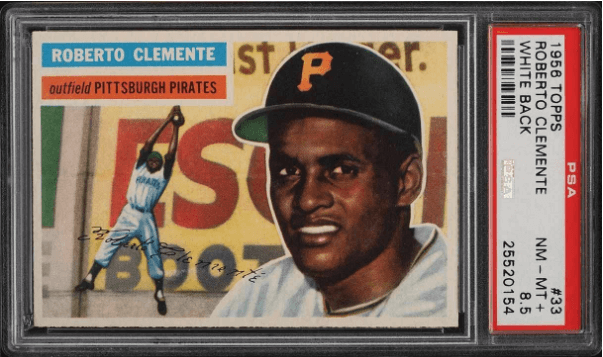
The History of Topps Trading Cards
The name Topps was first used in 1938, but it was a renamed company, first started as American Leaf Tobacco Co. in 1890. The first colossal hit they released wasn't a baseball card but rather their iconic Bazooka gum and the accompanying Bazooka Joe comics. In 1951, Topps employee Sy Berger designed what would become their first baseball set, the legendary 1952 Topps Baseball. It was the first annual release of a series that continues to this day. Though they have had their ups and downs, Topps remained the most successful baseball card manufacturer for 7 decades and counting.
The company has issued cards for every sport imaginable since. Some of their most successful (and valuable) releases are their basketball cards from the 1960s and 1970s, which were printed in lower numbers than their baseball equivalents. But many other successful products came from Topps, including their Star Wars releases and the Garbage Pail Kids cards. The monopoly Topps had established in the late 1950s and 1960s was eventually undone. That is why we saw the entry of many new players into the hobby in the 1980s, resulting in the "junk wax" overprinting extravaganza. Nonetheless, their status at the pinnacle of the pursuit was never lost.
Their overall supremacy in the card world was severely challenged when Panini America entered the local market and took over the rights to NBA cards in 2009. Topps later lost rights to NFL football cards as well and found themselves heavily dependent on baseball cards for their survival. But in 2021, they lost those rights when sports memorabilia giant Fanatics wrestled the MLB license away. Fanatics then used the opportunity to purchase Topps for $500 million.
Fanatics has since revived the fortunes of Topps, placing them in command of the hobby. The veteran company has bought the rights to the NFL and the NBA and will begin to produce licensed cards for those leagues in 2025. It appears that for the foreseeable future, Topps will be an absolute monopoly in the hobby. History repeats itself.
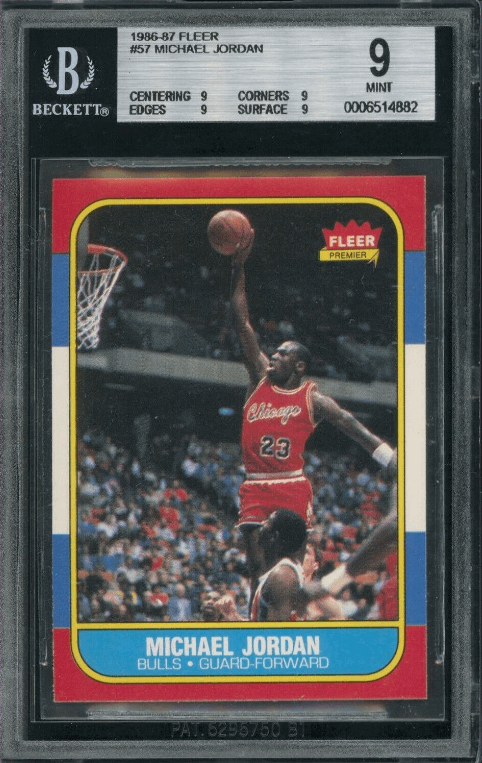
The History of Fleer Trading Cards
Like Topps, Fleer had its roots in the tobacco industry explosion of the late 19th Century. Meanwhile, like Bowman, they were a family-owned corporation from Philadelphia. And just like their rivals, they successfully moved into chewing gum. Most famously, they made the legendary Double Bubble, which is still available. Indeed, it was Fleer that came up with the idea of making gum that you can blow into a bubble. They were also the first to cause gum the way God intended in pink. Now, if that isn't an outstanding achievement, I am not sure what is.
Indeed, to this day, you can often see a big old bucket of Double Bubble in the dugouts of Major League Baseball clubs. They also pioneered the use of chewing gum in vending machines. Frank Fleer placed vending machines at New York City's Flatiron Building in the 1880s. The novelty was such a hit that the police had to break the lines up.
Interestingly, Fleer got into the baseball card game far earlier than their more illustrious rivals. Their first sets appeared back in the 1920s. But it never engaged in its marketing too seriously, seeing them as nothing more than a gimmick to promote its gum and tobacco products. They allowed Bowman and Topps to fight it out, and by the time Fleer got back into the game in 1959, Topps had all the big players on exclusive contracts. But in 1963, they reentered the market aggressively and signed hundreds of players to Fleer contracts. But Topps sued them and won, thus maintaining its monopoly.
In 1975, Fleer decided to challenge that ruling. They were in court for years, but in 1979 it was determined that Topps had broken the anti-trust laws and other companies would be allowed to produce licensed baseball cards. The courts also awarded Fleer 1$ in damages. The stockholders must have been thrilled!
The ruling started the wild west competition we call the "junk wax era." But Fleer was never able to become dominant in the market. Their main legacy today is the excellent Fleer 1986 Basketball set, which includes the most desirable Michael Jordan rookie card.
In 1992 Marvel bought the company and injected a good amount of money into the company. But in 1998, Marvel went bankrupt, and so did Fleer. Upper Deck later purchased the right to produce cards under the Fleer name.

The History of O-Pee-Chee Trading Cards
According to the rumors, an entire country is up there in the north, Canada. Yes, a strange name. And in that magical country, the brothers' John McKinnon McDermid and Duncan Hugh McDermid founded the O-Pee-Chee gum company in 1911.
They started to place hockey cards in their gum packages to attract new customers during the Great Depression. They also introduced baseball cards in the 1930s. Because they had a strong presence in the land of maple syrup, Topps partnered with O-Pee-Chee when they wanted to move into that market. So, they produced versions of Topps cards with the O-Pee-Chee logo on them for decades. In 2007, Upper Deck signed an agreement with the company, picking up where Topps left off.
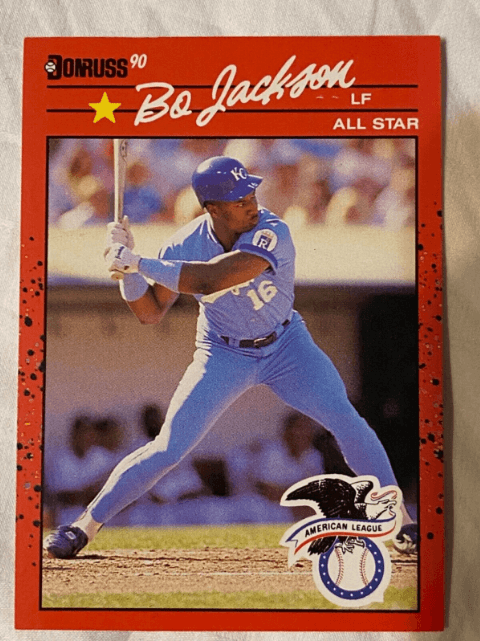
The History of Donruss Trading Cards
In 1954, the brothers Douglas Thomas, Donald, and Russel Wiener formed the Donruss company, which made candy and bubble gum. Why the name? It was a combination of their first names. Not that imaginative, but it sure beats calling the company Wiener Inc.
In the 1960s, the candy company got into trading card production. However, Topps had that pesky monopoly. Therefore, they moved into the T.V. show space instead and produced cards for the Addams Family and the Monkees. But once Fleer busted open the Topps monopoly, they also jumped into baseball cards.
The main gimmick of Donruss cards in the 1980s was the puzzle pieces included in each pack. They also had the "Rated Rookies" logo, which has become iconic in the hobby. However, they overproduced many of their products and didn't always have the best quality control. That worked against them when Upper Deck changed the focus of the hobby to higher quality cards with its trend-setting Upper Deck 1989 Baseball cards set release. They went bankrupt in 1998, though the company regrouped as Donruss Playoff L.P in 2001.
When Panini America pushed into the United States, they purchased Donruss and renamed it Panini America. They continue to release products under the Donruss name today. Donruss Optic has become particularly successful, using the "Rated Rookie" logos the company pioneered.
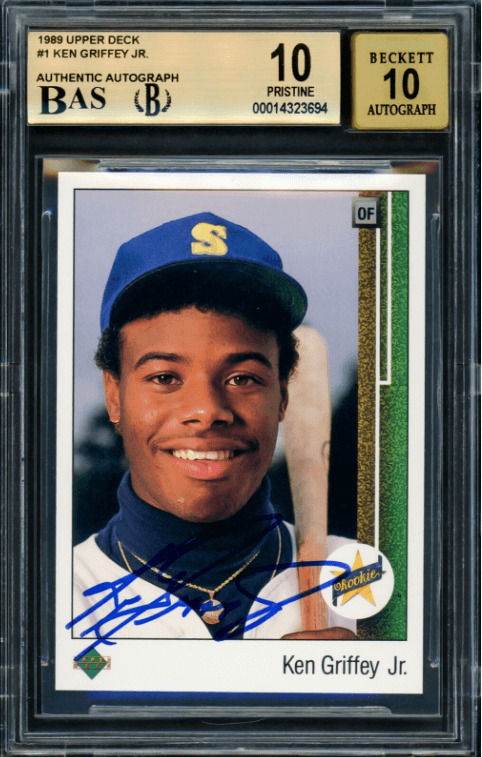
The History of Upper Deck Trading Cards
Aside from the first Topps Baseball cards set in 1952, no company made a more significant impact with its first set than the California-based Upper Deck company. Paul Sumner was the brains behind a release that changed everything. The hobby had seen nothing like the high-quality stock of the cards, the excellent action photographs, and the authentication holograms on each card. The entire 1989 Upper Deck Baseball Card batch sold out immediately, even though packs cost significantly more than the competition. Then, in 1997, they created another innovative product when that 1997 Upper Deck The basketball release was the first to include memorabilia cards with game-used apparel.
The company felt the road to dominate the hobby was now paved. So they gathered investor money and became the first company in trading card company to simultaneously obtain the licenses to the NHL, NFL, NBA, and MLB in the junk wax era. In 2005, they even made a serious bid to purchase Topps. They had become that successful and influential.
Upper Deck cards continued to be highly popular throughout the 1990s. However, all the other companies were influenced by their concept (in other words, ruthlessly ripped them off), and the company from Carlsbad gradually lost its edge. When Panini entered the fray and began to monopolize the NFL and NBA rights, Upper Deck lost much of its business. Today Upper Deck dominates the hockey card industry and remains important, albeit diminished, player in the hobby.
The History of Panini Trading Cards
The Panini brothers (Benito and Giuseppe) created this soccer sticker company in Modena, Italy, back in 1961. A fantastic achievement for two sandwiches. The company started by marketing popular stickers for Serie A, the Italian soccer league. But it was the World Cup that made them into an international player. They sold a sticker album for the 1970 World Cup that became a global sensation, inspiring millions of children worldwide to fill half the album and then lose interest. Those albums remain a landmark of every significant soccer competition to this day.
In 2009, Panini moved aggressively into the American market. They purchased the distressed Donruss company and made successful bids on the exclusive rights to the NBA and NFL. They faced the challenge of replacing the popular Topps Chrome cards that had dominated the basketball market then. But the Prizm series they engineered was an absolute sensation, becoming some of history's most popular sports card releases.
As Panini became a sports card monopoly, its customer service and quality standards deteriorated. They also developed a long backlog of autograph redemptions that turned many hobby enthusiasts against them. Finally, in 2021, Panini was the victim of blunt trauma when Fanatics purchased the rights for the NBA and NFL. The large apparel company soon bought Topps and is now hell-bent on replacing Panini as the big guy on the block. Therefore, the prospects of Panini America are unclear.
Final Word The History of Trading Card Companies
The stories of sports card trading companies help trace the roots of our beloved hobby. Starting as an afterthought for tobacco and gum companies, it became a national obsession and, later still, a multibillion-dollar industry. Along the way, these companies innovated and changed the hobby repeatedly. But, unfortunately, they mostly did so to get an edge over their competitors. Indeed, it was during the years of the fiercest competition that the most interesting new sets were dropped. At the same time, monopolies saw the hobby stagnate. So, you see, the story of those little pieces of cardboard is the story of America. Yes. This article is deeper than you thought.